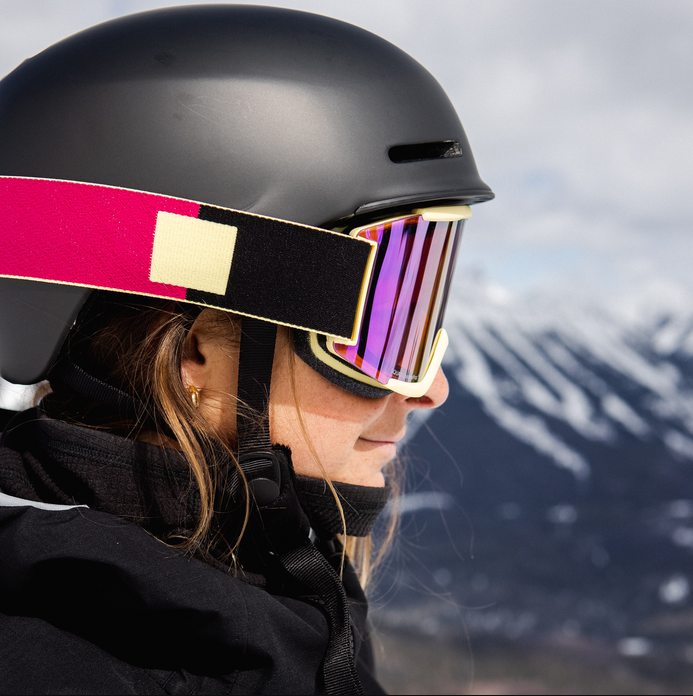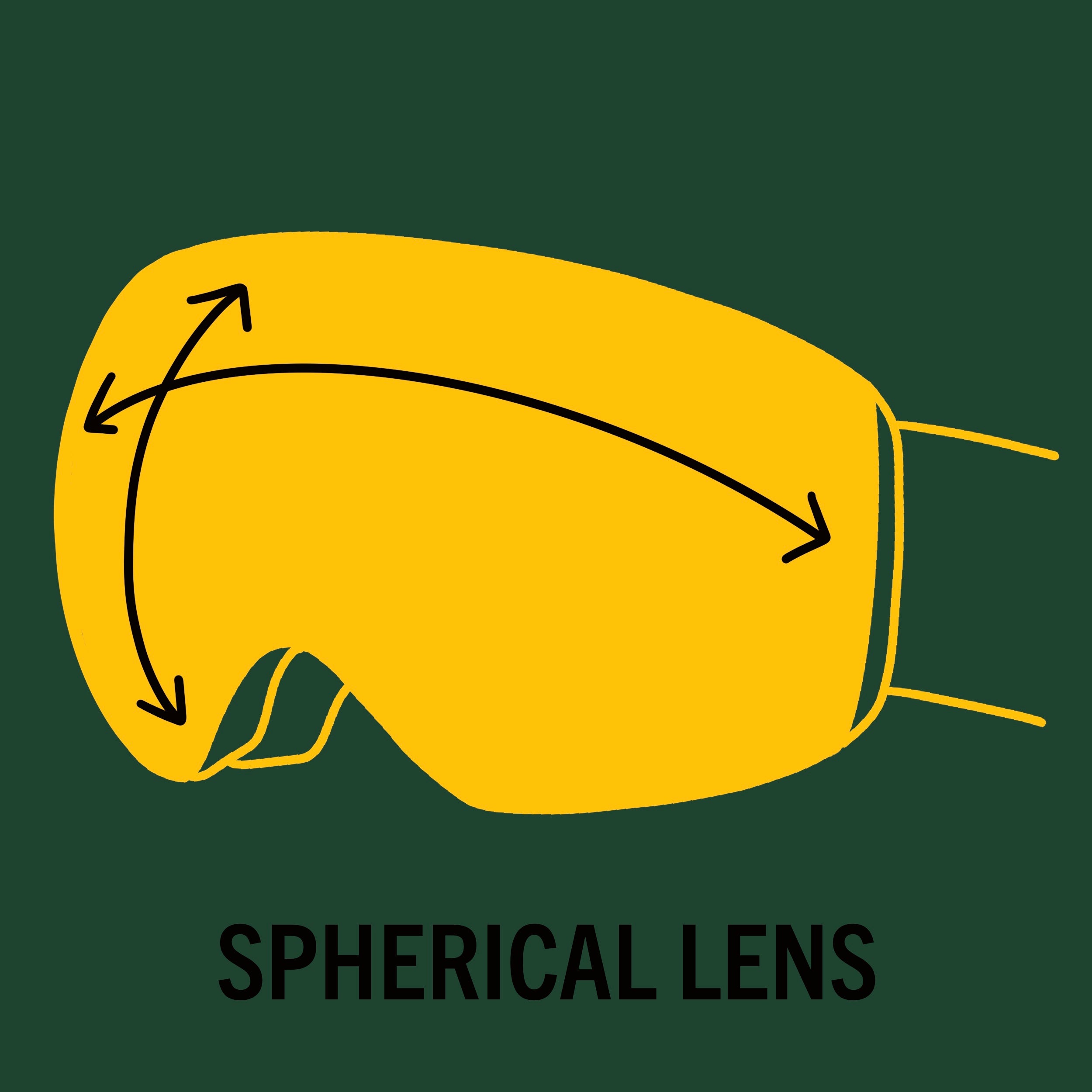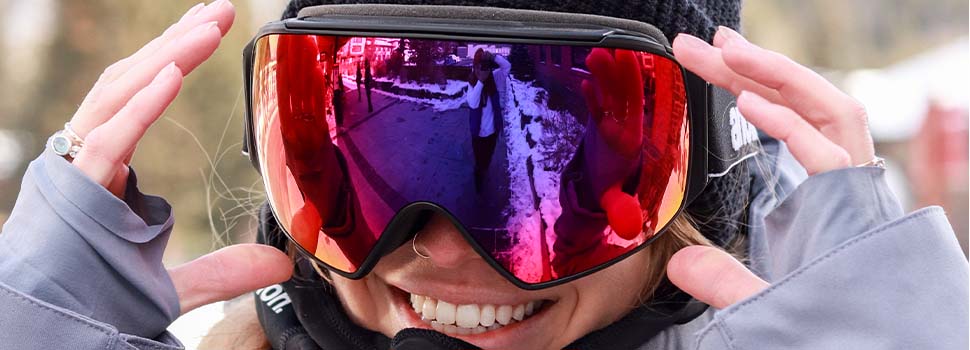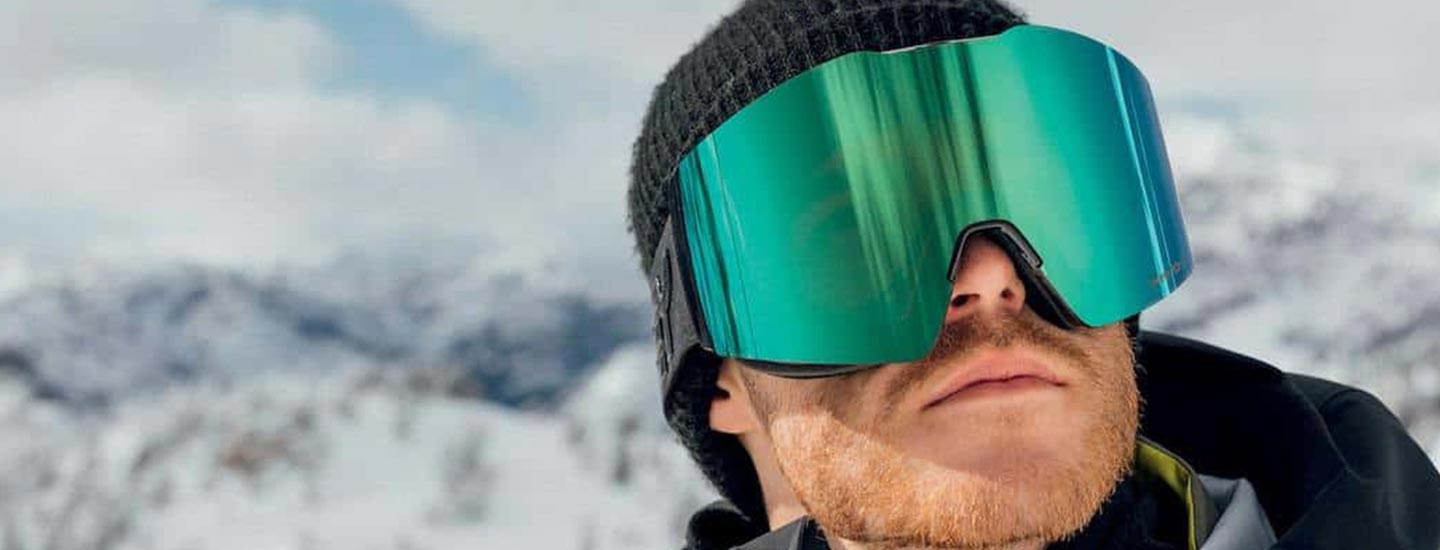Goggles are a super important part of your snowboarding set up. They protect your peepers from harmful UV rays that are bouncing off the snow as well as providing a barrier from cold, wind and moisture. Technology has come a long way over the years and it can get a little confusing. Like most snowboard gear, much of the decision for which goggles to purchase comes down to personal preference, fit and budget.

TIPS ON FINDING THE RIGHT FIT
First and foremost you'll want to try the goggles on. Make sure the foam of the frame sits comfortably on your face with no gaps allowing for wind or moisture to enter the goggle. All goggles have venting features on their own to allow warm air out and prevent fogging so you don't need any additional gaps. If you have problems with fogging check out our blog on goggle care. You'll also want to make sure your eyes are sitting in the approximate center of the lens.

Helmet compatibility
Another thing you'll want to consider is how the goggle fits with your helmet, don't be afraid to bring your helmet into the shop to find the best match. You don't want a big gap between your helmet and the top of your goggle and different shapes of either can cause compatibility issues. Majority of current goggles and helmets are fairly compatible across brands-- However, if you're in the market for both, you can find seamlessly compatible helmet/goggle combinations from Oakley, Anon, Spy and Smith.
LENS SHAPES
There are 3 basic types of lens shapes, spherical, cylindrical and toric. Each will offer different features and a different look.

SPHERICAL LENSES
Spherical lenses are equally curved horizontally & vertically, mimicking the shape of the eye. The lens curves at both axis' & is noticeably bubbled in shape. The added space between your face & lens means less opportunity for fog accumulation. Since the shape mimics the human eye there is also less optical distortion. The bubbled shape also increases peripheral vision & provides less glare because there are no flat spots for light to hit.

CYLINDRICAL LENSES
Cylindrical lenses curve in one direction, horizontally around the face but appear flat when viewing them from the side. They are lower profile fit allowing good peripheral vision. Since the lens sits closer to the face it can fog up easier but with hydrophobic lens treatments and venting this can still be avoided. Optical distortion is greater with this lens shape as it is different than the natural curve of your eye, but it's not very noticable. Since there are flat points along the lens you may also experience some glare.

TORIC LENSES
The latest in lens tech, toric lenses are a hybrid of spherical & cylindrical shapes & truly offers the best of both worlds. A toric lens curves on both axis' with less of a vertical curve than a spherical lens. This option will sit slightly farther on your face than cylindrical lenses so fogging is less of an issue. Because they are rounded you'll also get less glare & more optically correct vision. Peripheral view and birds eye view of the terrain directly below you is also improved.


